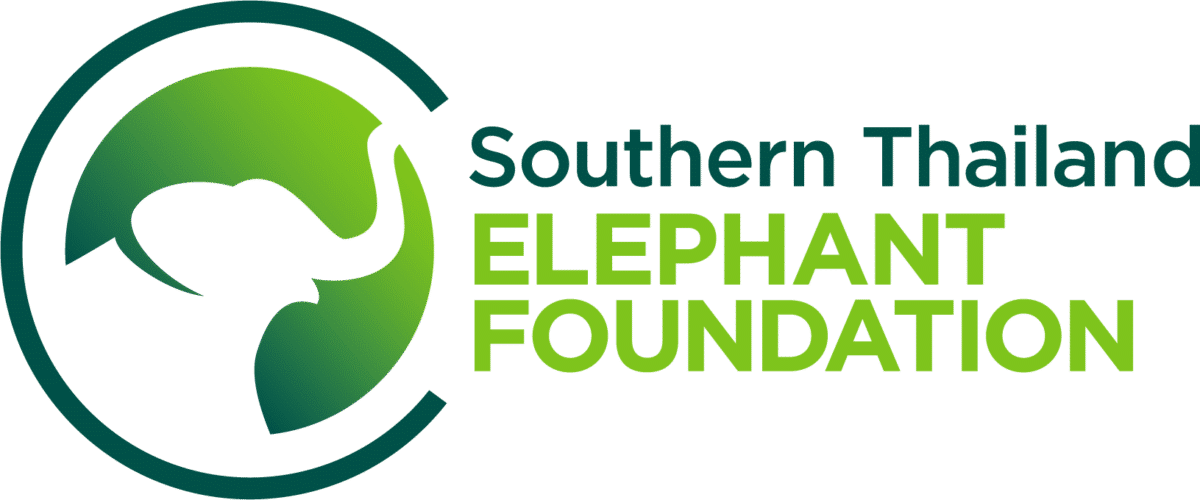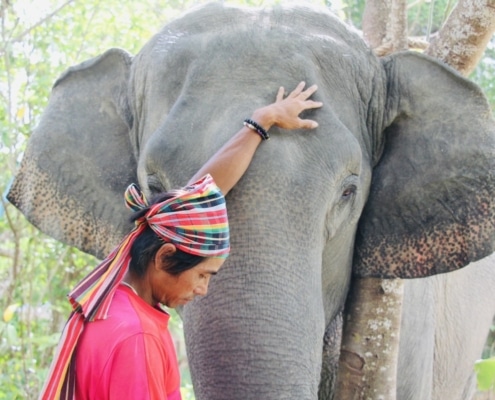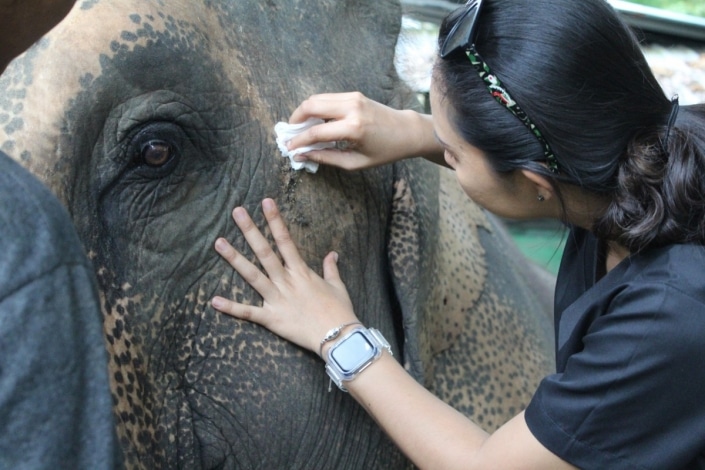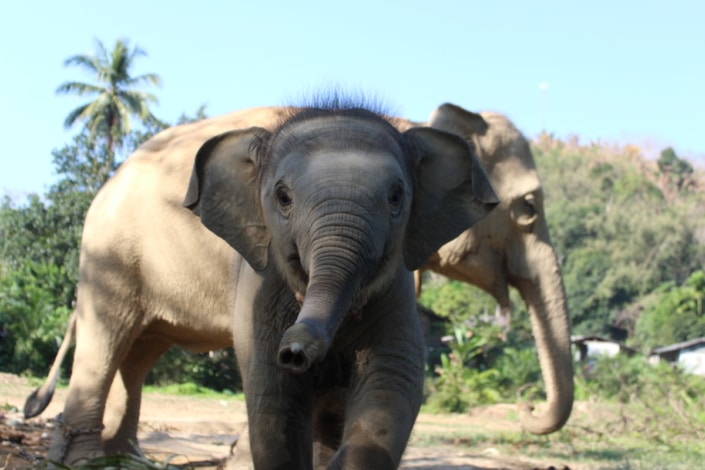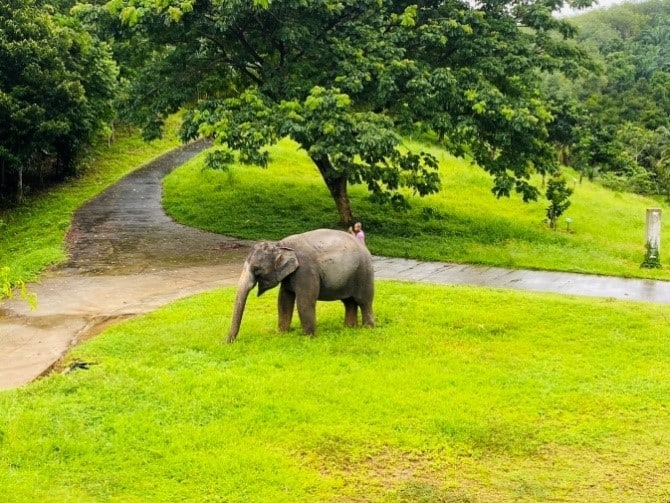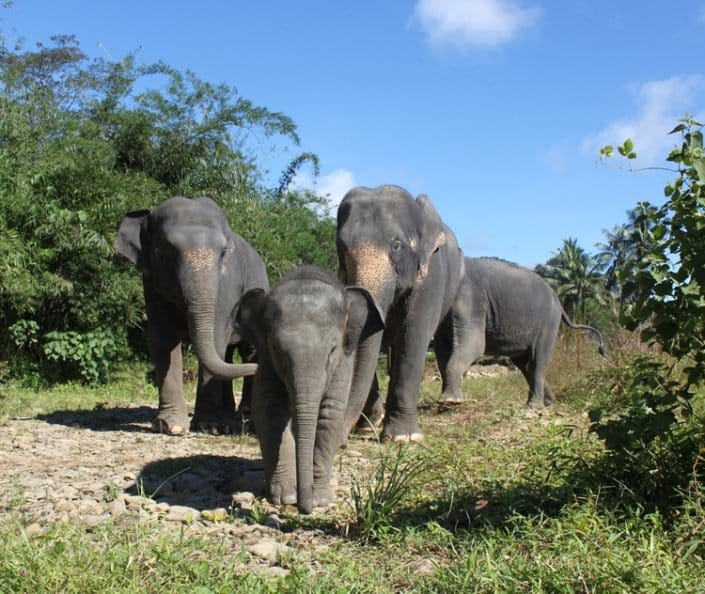Is there a solution to keeping domesticated elephants?
A Mahout with his elephant
There is a major problem for the elephant population of Thailand: Asian elephants are an endangered species that need protecting [1], yet most of Thailand’s elephants are domesticated, cared for by humans in circumstances that are often far from ideal. But to return elephants to the wild – surely the obvious solution – is not that easy.
It’s worth just pausing to consider why elephants were domesticated in the first place, and why they now no longer play an important economic role – apart from their use in the tourist industry, which is where most people see them, and witness the best and worst of elephant care. Elephants in Thailand have been domesticated for thousands of years, their role being varied over time, but they were mostly used for logging and other heavy work where vehicles were not available or could not access the difficult terrain. This came to an abrupt end in 1989 when the Thai government banned logging (apart from official government work) in an attempt, quite rightly, to save what was left of Thailand’s rapidly depleting virgin forest. In a sad twist of fate, elephants had been used to destroy their own natural habitat.
The move was clearly of benefit to the environment, but overnight it left hundreds of elephant owners (mahouts), usually owning just one or two elephants for their family, without a source of income from the logging, and thus without the ability to feed their own families let alone their elephants. Ironically, it was the tourist industry that saved the day for some of these mahouts, by renting their elephants to entertain visitors. But for the elephants it was not always a good outcome: the elephant tourist industry has a mixed reputation.
So why keep elephants in captivity if they are no longer needed except for entertainment? Unfortunately, the realities on the ground make the option of returning them to the wild difficult. In Thailand there are currently around 3,700 domesticated elephants and an estimated 3,000 wild elephants, but there is barely enough natural habitat even for the wild elephants (67% of elephant habitat in Thailand has been lost over the past 300 years [2]). Domesticated elephants are accustomed to being looked after by humans, so to let them out into what is left of the forests would undoubtedly lead to suffering, and many would not survive. It would also further increase human/elephant conflict, which is already a major problem in some areas, and it would cause pressure on food in the forests, thus threatening the existing population of wild elephants.
Elephants live long lives (up to about 80 years) so there is no quick fix here. As an endangered species, it is vital that we consider how their numbers can be preserved and, hopefully, increased. At STEF, our role as to do whatever we can to promote the welfare of these elephants, by providing free veterinary care, by giving advice to mahouts on the care of their elephants and by education to the wider population about the need to protect and respect their national animal.
[1] Asian elephants are on the IUCN Red List
[2] https://www.statista.com/chart/29931/elephant-habitat-loss-asia/
[Click on photos below to enlarge]
